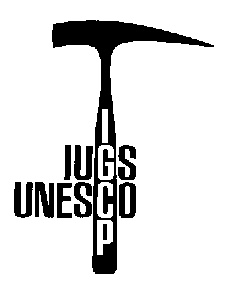
International Geological Correlation Programme
Project No. 437
Coastal Environmental Change During Sea-Level Highstands: A Global Synthesis with implications for management of future coastal change
Puglia 2003 - Final Conference

 |
International Geological Correlation Programme Project No. 437 Coastal Environmental Change During Sea-Level Highstands: A Global Synthesis with implications for management of future coastal change
Puglia 2003 - Final Conference |
 |
|
Otranto |
||
|
(courtesy of I.A.T. Otranto) |
Otranto (the Roman Hydruntum) is an awesome village placed in a small bay along the Adriatic coast of Puglia region. It was for many centuries the political, cultural and commercial centre of the southern Puglia, still called "Terra d'Otranto". In the town, the traces of the numerous civilisations which crossed this Mediterranean region can be still observed along its old narrow stonepaved streets. |
|
|
A
short
history On
July 28th, 1480, a fleet of two hundred Turkish warships, with about
twenty thousand soldiers under the command of Pasha Acomat, set sail from
Albania towards Brindisi: a strong north-west wind drove the ships towards
Otranto.
The Turks besieged the town. Soldiers of the Spanish garrison
escaped during the night while
Acomas sent a messenger to the town asking the inhabitants to surrender: there was no way out, the Aragon
army, in fact, was engaged in Tuscany. The people of Otranto knew perfectly well that they could not
resist such a big army, yet they answered that they would have fought down to
the last man in the name of Christ and of their king. |
|
|
|
|
The siege lasted a fortnight, with a series of rageous cold-steel, hand-to-hand combats on the glases, until, on August 12th, the Turks opened a breach and burst into the town, slaughtering the people who still survived. Women, children and old people, together with the archbishop, had taken refuge in the cathedral. The Turks breached the church, beheaded the archbishop, and raped women. The men still alive were made slaves or they were forced to choose between martyrdom and abjuration. They preferred to die. Eight hundred men, bare-footed, handbound, were brought up the hill of Minerva, where they were beheaded. The bones of the eight hundred martyrs can still be seen partly in St. Katherine's Church in Naples, partly in the chapel dedicated to them, in the Cathedral of Otranto, where they are kept in seven cascs. |
|
|
The Cathedral was built in 1080 by order of Ruggero the Norman, and it constitutes an original example of paleochristian architecture. It is divided into three naves with fourteen columns surmounted by capitals of different styles. The floor is covered by the famous mosaic by Pantaleoni (a monk of XII century), made with polychrome tesserae: its style is Romanesque, but some Byzantine influences can also be recognized. The crypt rests on forty-two columns of different styles and the remnants of precious frescoes cover its walls. |
|
|
|
|
Not far from the Cathedral there is the Aragon Castle, which will host the Conference. In the same area there is the Byzantine Church of St. Peter: a fine specimen of rare stylistic consistency, with its Greek-cross plan, barrel-vaults, frescoes with oriental motifs on the walls. |
(courtesy of I.A.T. Otranto) |